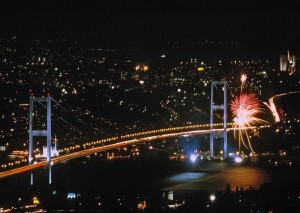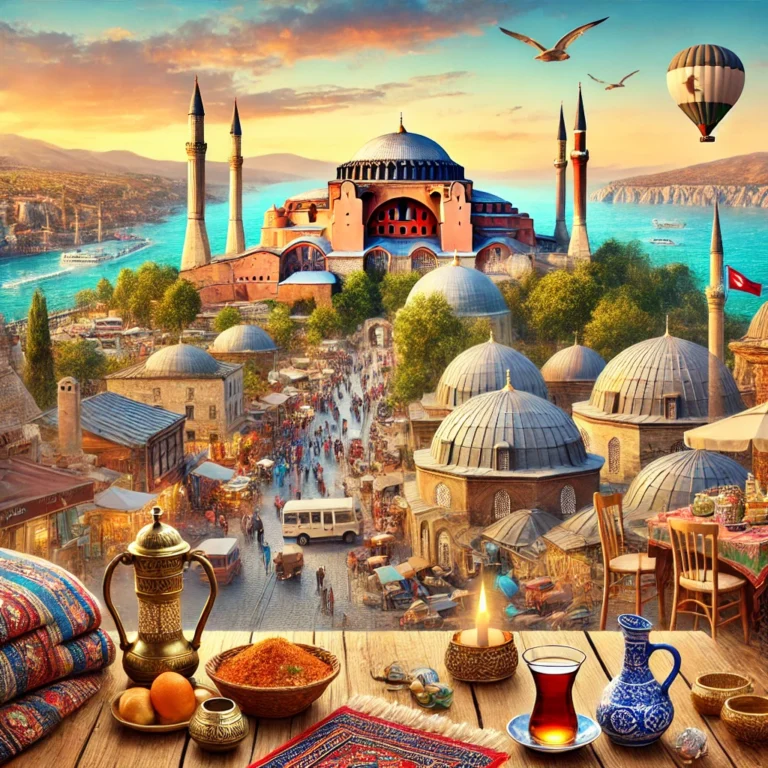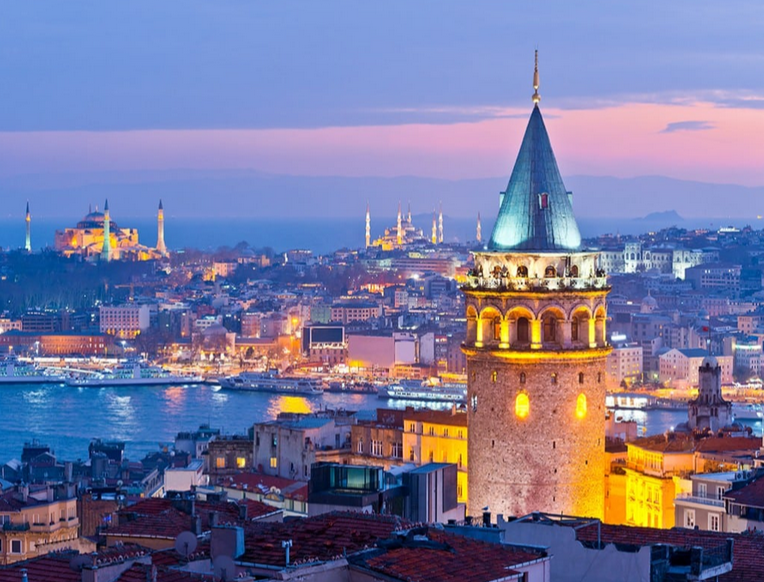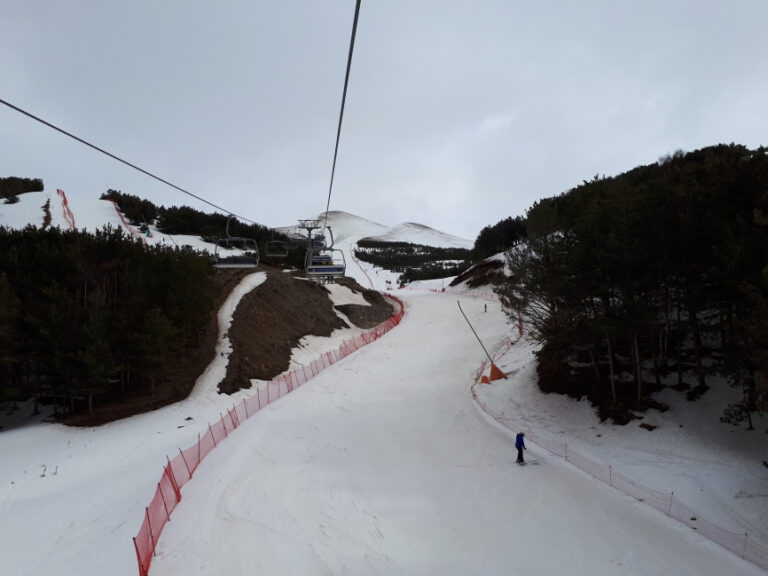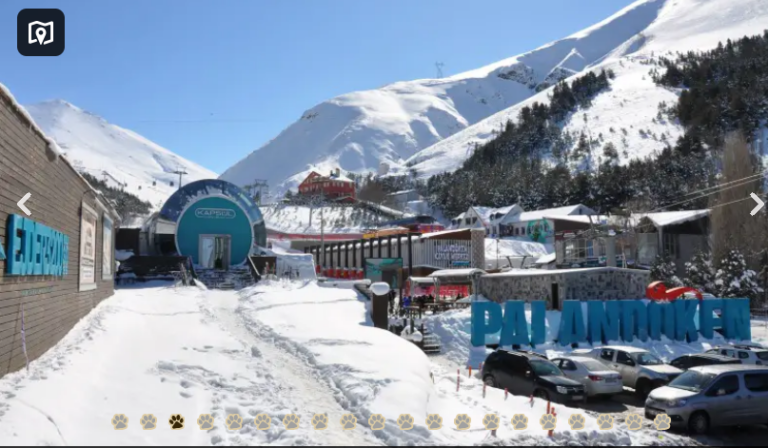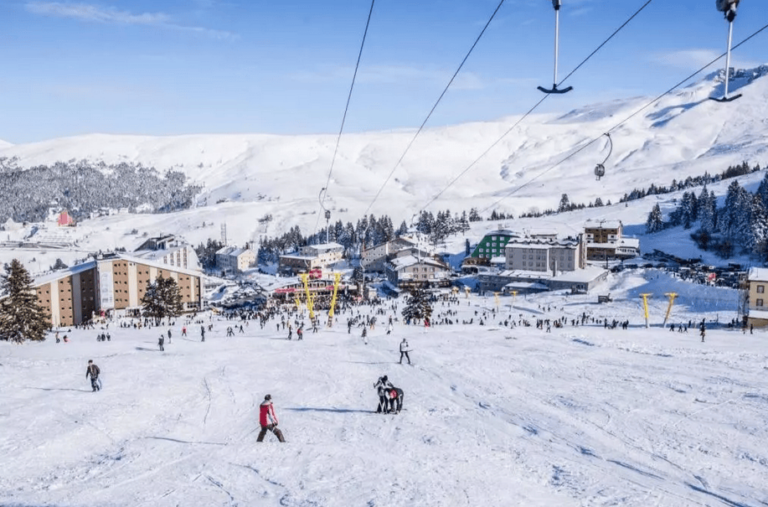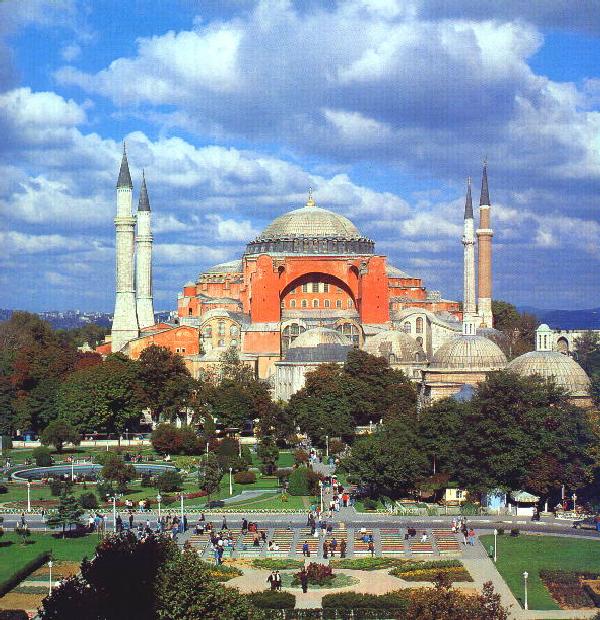
Book Hotel in Istanbul | Cheap Flights to Istanbul
Explore top attractions and activities in Istanbul, including the Blue Mosque, Bosphorus cruises, and unique shopping experiences in the Grand Bazaar. Istanbul is a vibrant city full of history, culture, and unique experiences. The city can be divided into four main areas of interest for tourists:
Prince’s Islands (Summer Recommended):
A perfect getaway from the hustle and bustle of the city, the Prince’s Islands are just a short ferry ride away. Enjoy beautiful landscapes, car-free streets, and historical sites, especially during the warmer months.
Old Town (Sultanahmet):
This is where you’ll find the city’s most iconic historic landmarks, including Hagia Sophia, the Blue Mosque, the Hippodrome, and Topkapi Palace.
Beyoğlu (Pera District):
A lively and modern district, Beyoğlu is home to Istiklal Street, the Galata Tower, and a mix of shops, restaurants, and art galleries. It offers a blend of contemporary culture and history.
Bosphorus:
The Bosphorus Strait divides Istanbul between Europe and Asia, offering stunning views and opportunities for boat cruises. Visit picturesque neighborhoods along the strait, like Bebek and Ortaköy, for a scenic and relaxing experience.
Things to do in Istanbul
1. The Blue Mosque – Sultanahmet Mosque
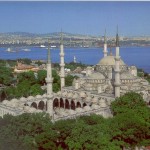
Located in the heart of Sultanahmet Square, the Blue Mosque is a must-see on any list of things to do in Istanbul. Built between 1609 and 1619 by court architect Mehmet Aga, a student of the renowned Sinan, this mosque was designed to rival not only the Ottoman mosques but also the Byzantine architecture of the nearby Hagia Sophia. With six minarets and stunning blue Iznik tiles adorning the interior, the Blue Mosque is an architectural masterpiece. It’s often referred to as the “Blue Mosque” because of the striking blue tiles that decorate its interior, making it one of the most beautiful mosques in the world.
2. Hagia Sophia (Ayia Sophia, Santa Sophia, St. Sophia)
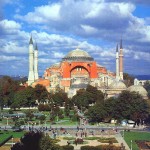
Hagia Sophia is undoubtedly one of the top places to visit in Istanbul. Originally built as a church during the reign of Emperor Justinian I between 532 and 537, it was later converted into a mosque after the Ottoman conquest of Constantinople in 1453. The Hagia Sophia stands as a testament to both Christian and Islamic heritage, with its awe-inspiring architecture and mosaics that tell the story of both religions. Today, it serves as a museum, showcasing the incredible fusion of Byzantine and Islamic art. The building’s significance is also highlighted in National Geographic’s documentary Ancient Megastructures. Visiting Hagia Sophia is an unforgettable experience that gives you a deep insight into Istanbul’s rich history.
3. Süleymaniye Mosque
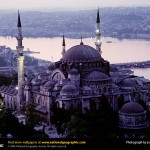
The Süleymaniye Mosque is the largest and most imposing mosque in Istanbul, located in the historic part of the city. Designed by the famous architect Mimar Sinan, this mosque is an architectural marvel, with perfect proportions and a beautiful aesthetic both inside and out. The mosque’s surrounding complex includes faculties, a library, baths, public kitchens, a hostel, and even a hospital, making it a self-contained center of community life. The mosque is best appreciated from a distance, such as from the Galata Tower or the Galata side of the Golden Horn, where you can take in its grandeur in its entirety.
Book Hotel in Istanbul | Cheap Flights to Istanbul
4. Hippodrome
The Hippodrome of Byzantium was the center of Constantinople’s political and social life for over 500 years, hosting thrilling horse and chariot races, gladiatorial combats, and grand spectacles. It also became the site of major political unrest, with riots and rebellions often erupting here, making it a place of both celebration and conflict.
Today, the site of the ancient Hippodrome is a peaceful city park known as At Meydanı (Horse Grounds), a nod to its Ottoman-era function. The Hippodrome was originally laid out in 196 AD by the Roman emperor Septimius Severus. Later, Constantine the Great expanded it into a vast stadium that could accommodate up to 100,000 spectators.
The Hippodrome was not only the heart of Constantinople’s social life, but also a stage for political expression. Crowds gathered here to voice their support for the ruling powers, but also to challenge them, sometimes leading to riots. Over the centuries, the Hippodrome was adorned with grand monuments and artworks, many of which have unfortunately not survived the test of time. However, three significant examples from the Spina (the long structure running down the center of the stadium) still remain, offering a glimpse into the splendor of this ancient site.
5. Obelisk
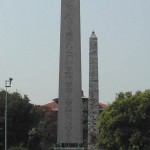
A second monument from the Spina that has survived is known as the Column of Constantine Porphyrogenitus (or Örme Sütun in Turkish). This column is named after the Byzantine emperor Constantine VII Porphyrogenitus (912–959), who covered the roughly-built stone pillar with bronze. However, the bronze plaques were stripped away and looted during the Latin invasion of 1204.
The third monument on the Spina is also the oldest surviving work from the ancient Greek world in Istanbul. Known in Turkish as the Yılanlı Sütun (Serpentine Column), this remarkable monument was brought from the Temple of Apollo at Delphi. The column’s shaft consists of three intertwined serpents, whose heads originally supported a large gold bowl measuring three meters in diameter. While the gold bowl disappeared long before the Christian era, the shaft of the column and part of one of the serpent heads (albeit fragmented) have endured to the present day.
6. Basilica Cittern – Yerebatan Sarayi
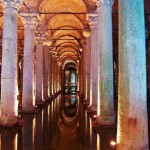
The Basilica Cistern, also known as Yerebatan Sarayı or Yerebatan Sarnıcı, is one of the top attractions in Sultanahmet Square, located in Istanbul’s Old Town. It is the largest of the many ancient cisterns still hidden beneath the city, some of which remain undiscovered. Visiting this atmospheric underground space is a must on your list of places to visit in Istanbul, offering a unique experience in the heart of the city.
The cistern was originally built in the 4th century by Emperor Constantine I and was later restored and expanded by Emperor Justinian I in the 6th century. It was designed to store water that was brought from the Belgrad Forest via the Cebeciköy Arch.
One of the most striking features of the Basilica Cistern is the two Medusa heads at the far end. These ancient relics were taken from a pagan site and are placed in unusual positions—one is upside down, and the other is horizontal. These heads not only add an intriguing element of mystery but also complement the columns beautifully, enhancing the unique atmosphere of the cistern.
Book Hotel in Istanbul | Cheap Flights to Istanbul
7. Grand Bazaar – Kapalicarsi
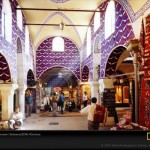
A must-see in Istanbul, the Grand Bazaar is the world’s largest covered market, with over 4,000 shops spread across 58 streets. It’s a lively hub where visitors can shop for everything from carpets and jewelry to leather goods, home decor, and more. The Bazaar has been a cultural center for centuries, filled with both locals and tourists.
The Bazaar is home to hundreds of hans (commercial buildings), once used to host caravans and now serving as workshops where various goods are produced. Mercan Ali Pasa Han and Cebeci Han focus on carpet washing and repairs, while Zincirli Han is a hotspot for jewelry making. You’ll also find antique shops selling porcelain, silver, and other historical artifacts, along with traditional carpets from various regions in Turkey.
The Ic Bedesten (inner bedesten) and Sandal Bedesteni are the heart of the market, where antique lovers will be captivated by items like Ottoman-era jewels, porcelain coffee cups, and silver cigarette boxes. The Grand Bazaar offers much more than shopping – it’s a cultural experience, where you can explore hidden treasures and soak in centuries of history.
8. Spice Bazaar – Misir Carsisi
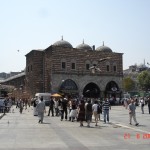
The Spice Bazaar, Istanbul’s second-largest covered market, is part of a historic mosque complex located in the Old Town. It’s just a short walk from the Grand Bazaar and major mosques, making it a great addition to your list of places to visit in Istanbul. The complex also includes beautiful tombs and a stunning fountain.
Originally dedicated to spices, the market now features a mix of dried fruits, groceries, jewelry, and gift shops. On one side, you’ll find a vibrant flower market and cozy cafes, while the other side is lined with fish, vegetable, and grocery stores. The Spice Bazaar offers a lively, unique atmosphere, making it one of Istanbul’s must-see attractions.
9. Galata Tower – Galata Kulesi
Located on the northern shore of the Golden Horn, the Galata Tower is one of Istanbul’s most iconic landmarks. This towering, cone-capped structure dominates the skyline of the Galata district.
Originally built in the 6th century, the tower was destroyed during the Fourth Crusade and later rebuilt in 1348 as the Tower of Christ by the Genoese. It once served as the centerpiece of the Genoese fortifications in Constantinople. Today, it offers a spectacular panoramic view of Istanbul, making it a must-see spot for visitors.
10. Maiden’s Tower – Kiz Kulesi
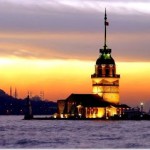
Today, the Maiden’s Tower (Kız Kulesi) serves as both a restaurant and a popular sightseeing spot in Istanbul. The tower’s history dates back to 341 BC, when it was originally a mausoleum built on marble columns for the wife of Commander Chares. This site, once part of the Bosphorus Straits, was known as “Vus,” and a chain was pulled across the water from Sarayburnu to the island to regulate traffic through the Bosphorus.
In 1110 AD, Emperor Manuel Comnenos built the first recognizable structure on the site, marking the beginning of the tower’s long history. Today, it stands as a symbol of Istanbul with a rich blend of historical significance and modern use.
11. Chora – Kariye Camii
The Church of the Holy Savior of Chora, or Kariye Camii in Turkish, is one of Istanbul’s most fascinating Byzantine sites, second only to Hagia Sophia. While the building itself is beautiful, it’s the exceptional collection of mosaics and frescoes that truly set it apart. These artworks have been magnificently restored by the Byzantine Institute of America, making the church a must-visit for those interested in Byzantine art and history.
12. Princes’ Islands
The Princes’ Islands are a group of nine islands located off the coast of Istanbul in the Sea of Marmara, with Büyükada being the largest. While it’s a bit of a time commitment, a visit to the islands is a great addition to your Istanbul itinerary.
Today, the islands are popular for day trips from Istanbul. With motorized vehicles banned on most of the islands, visitors explore by foot, bicycle, horse-drawn carriage (fayton), or donkey. The islands are especially enjoyable in the summer, making them a perfect escape from the city’s hustle and bustle.
13. Istiklal Avenue – Taksim Square
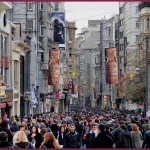
Istiklal Caddesi, one of the most famous streets in Istanbul, is located in the vibrant Beyoglu district. This 3 km-long pedestrian street is a bustling hub of culture and commerce, featuring boutique shops, art galleries, cinemas, cafés, bars, and restaurants, all nestled within the city’s elegant 19th-century Turkish architecture.
The avenue is not only a shopper’s paradise but also a historic and cultural landmark. Highlights include Çiçek Pasaji (a lively flower market with cozy restaurants), Balik Pazari (the Fish Bazaar), and several churches, synagogues, and mosques. Istiklal also hosts consulates, academic institutions, and significant buildings from various European nations, making it a cosmopolitan blend of culture and history. A must-visit on your Istanbul list!
Book Hotel in Istanbul | Cheap Flights to Istanbul
These are some of the top places to visit in Istanbul. Before you plan your trip, make sure to create your Istanbul itinerary accordingly. However, keep in mind that time is precious, so it’s a good idea to either join a sightseeing tour or hire a guide during your visit. Without proper context, you might miss out on the rich history and meaning behind many of the city’s landmarks. Review your list of things to do in Istanbul and be prepared for an unforgettable experience! 🙂
